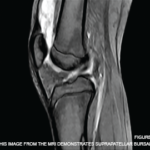Recent guidelines offer varying recommendations on intra-articular HA for knee OA. David Felson, MD, MPH, professor and director of the Clinical Epidemiology Research & Training Unit at Boston University School of Medicine, says, “The Osteoarthritis Research Society, which conducted a systematic review of the HA literature, gave it an ‘uncertain’ recommendation and stated it was ‘not appropriate’ for multiple-joint OA. No other major guidelines, such as ACR or AAOS [American Academy of Orthopaedic Surgeons], support the use of [intra-articular] HA. [Although] published trials from industry have been positive, suggesting efficacy, meta-analysts have uncovered large unpublished trials that showed no efficacy of HA,” Dr. Felson says.
Among the guidelines on the use of IAHA are those from the National Institute for Health and Care Excellence (NICE). Its 2014 clinical guidelines for care and management of OA state that HA injection should not be offered for OA management.2
The ACR recommendations, published in April 2012 in Arthritis Care & Research, give a conditional recommendation for IAHA use in patients who have had an inadequate response to initial therapy.3 The initial pharmacologic therapies conditionally recommended by the ACR include acetaminophen, oral and topical NSAIDs, tramadol and intra-articular corticosteroid injections. The expert panel conditionally recommended the use of tramadol, duloxetine or IAHA injections in patients older than 75. The ACR makes no recommendation regarding the use of HA for initial management of knee OA.
EULAR recommendations issued in 2003 support the efficacy of HA for management of knee OA for pain relief and knee functional improvement, a recommendation supported by level 1B evidence.4 The guidelines released by OARSI in 2014 in Osteoarthritis and Cartilage take a similar stand to the ACR and provide an “uncertain” recommendation for IAHA for patients with knee-only OA.5 One meta-analysis, according to the OARSI guidelines, raised some safety and efficacy concerns about the therapy, but “a number of analyses revealed positive effects for pain.”
The OARSI guidelines indicate that there is a role for physician–patient interaction to determine whether IAHA may have some merit in the context of its risk–benefit profile and the patient’s characteristics, comorbidities and preferences. AAOS released a revised clinical practice guideline for knee OA in 2013, stating that IAHA is no longer recommended for symptomatic OA of the knee.6 That statement noted that individual studies had found statistically significant treatment effects, but that when the evidence was combined in a meta-analysis, the evidence did not meet the “minimum clinically important improvement thresholds.”


